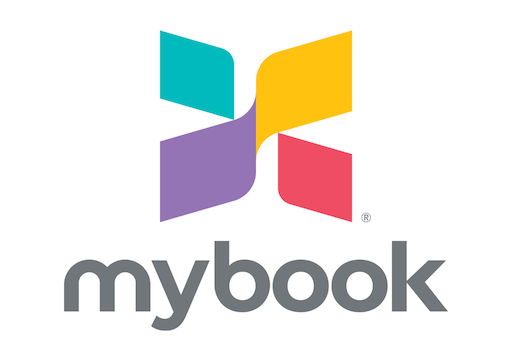
Tell Digital Marketing Requirements: Must-Have Tips for Clients
When it comes to successful collaborations in the digital marketing world, clients often find themselves swimming in an ocean of terminology and best practices. Understanding how to clearly tell digital marketing requirements helps bridge the gap between what clients envision and what marketers can deliver. Effective communication not only sets the stage for a fruitful partnership but also ensures that marketing strategies align with business goals.
Know Your Goals
Before you express your digital marketing requirements, take a moment to identify your core business objectives. Are you looking to boost brand awareness, drive traffic to your website, or perhaps increase conversion rates? Establishing clear, measurable goals is the first step. For example, if your ambition is to enhance brand visibility, you might want to focus on content marketing and social media engagement.
Think of it this way: imagine inviting someone to your birthday party without giving them the address or theme. Similarly, vague objectives can lead to miscommunication and mismatched strategies in digital marketing.
Understand Your Target Audience
Once you’ve laid out your goals, the next step is to define your target audience. Who are you trying to reach? Dive deep into demographic information such as age, gender, location, and interests. Conducting surveys or utilizing analytics tools can offer rich insights. For instance, if your target audience is young professionals in urban areas, consider strategies that resonate with their busy lifestyles, like quick, engaging video content.
This understanding ensures that everyone is on the same page when discussing the digital marketing requirements. You wouldn’t serve a gourmet meal to a child who prefers pizza, right? Similarly, your marketing campaigns should reflect the tastes and preferences of your audience.
Communicate Your Budget
Let’s get real here; budget is often the elephant in the room. Being upfront about your financial constraints not only aids marketers in crafting tailored strategies, but it also avoids frustrations down the line. You don’t want to find out mid-campaign that your dream plans exceed your budget by several thousand dollars.
For instance, if you have a modest budget, strategies like organic social media growth or search engine optimization (SEO) can be more suitable than paid ad campaigns. Clearly articulating your budget allows marketers to prioritize and allocate resources effectively.
Emphasize Your Brand Voice and Message
Every brand has a unique voice, and it’s crucial to communicate this to your digital marketing team. Are you playful and quirky, or do you prefer a more formal approach? This brand personality should reflect in everything from your blog posts to your social media interactions.
Consider Coca-Cola, which is often playful and upbeat in its messaging. If you were to partner with a marketing agency, clearly stating this preference sets a consistent tone throughout your campaigns. Clients who overlook this detail may find their branding diluted or misrepresented.
Set Expectations for Communication and Reporting
Let’s face it; no one enjoys being left in the dark. Setting expectations about how frequently you want updates and what metrics matter most is essential. Perhaps you’d like weekly check-ins or monthly reports. This structure helps manage both your and your marketer’s expectations.
Take, for example, a scenario where a client desires daily updates, but the marketer operates on a weekly basis. Such a mismatch can lead to misunderstandings and frustration. Agreeing on a communication plan creates a more harmonious working relationship.
Be Open-Minded and Adaptable
Digital marketing is incredibly dynamic. Algorithms change, user behaviors shift, and trends emerge overnight. While it’s important to voice your needs, being receptive to the marketer’s insights can lead to unexpected successes. They are the experts in navigating the digital landscape, after all.
In a recent campaign for a local coffee shop, flexibility in targeting allowed for a creative pivot towards Instagram Stories when the original plan showed promise on that platform. Being adaptable often yields the best results.
The collaboration between a client and digital marketing team can become a powerful partnership, leading to remarkable outcomes. By clearly stating your digital marketing requirements, you pave the way for a process that is engaging, focused, and successful.
FAQ
1. What are the key components of a digital marketing strategy?
A digital marketing strategy usually includes content marketing, social media management, search engine optimization (SEO), email marketing, and paid advertising. Understanding which components align with your business goals is crucial.
2. How can I effectively communicate my audience’s preferences?
Utilize tools like Google Analytics, social media insights, or direct customer feedback through surveys to gather data on your audience. This information helps marketers tailor their approach effectively.
3. How often should I expect to receive updates on my digital marketing campaigns?
This varies by project and client preferences, but a common practice is to have weekly or bi-weekly check-ins. Clear communication about expectations for updates is critical for a successful partnership.
Related Posts
Switch Lead Gen Expert: Effortless Steps for Success
In todays competitive landscape, becoming a switch lead gen expert can transform your approach to business growth. With a focus on building relationships and understanding your audience, youll discover...
Switch Instagram Consultant: Effortless Guide to Success
Are you struggling to make an impact on Instagram? A switch to an Instagram consultant could be your key to effortless success, guiding you through the ever-changing social media landscape and helping your...












